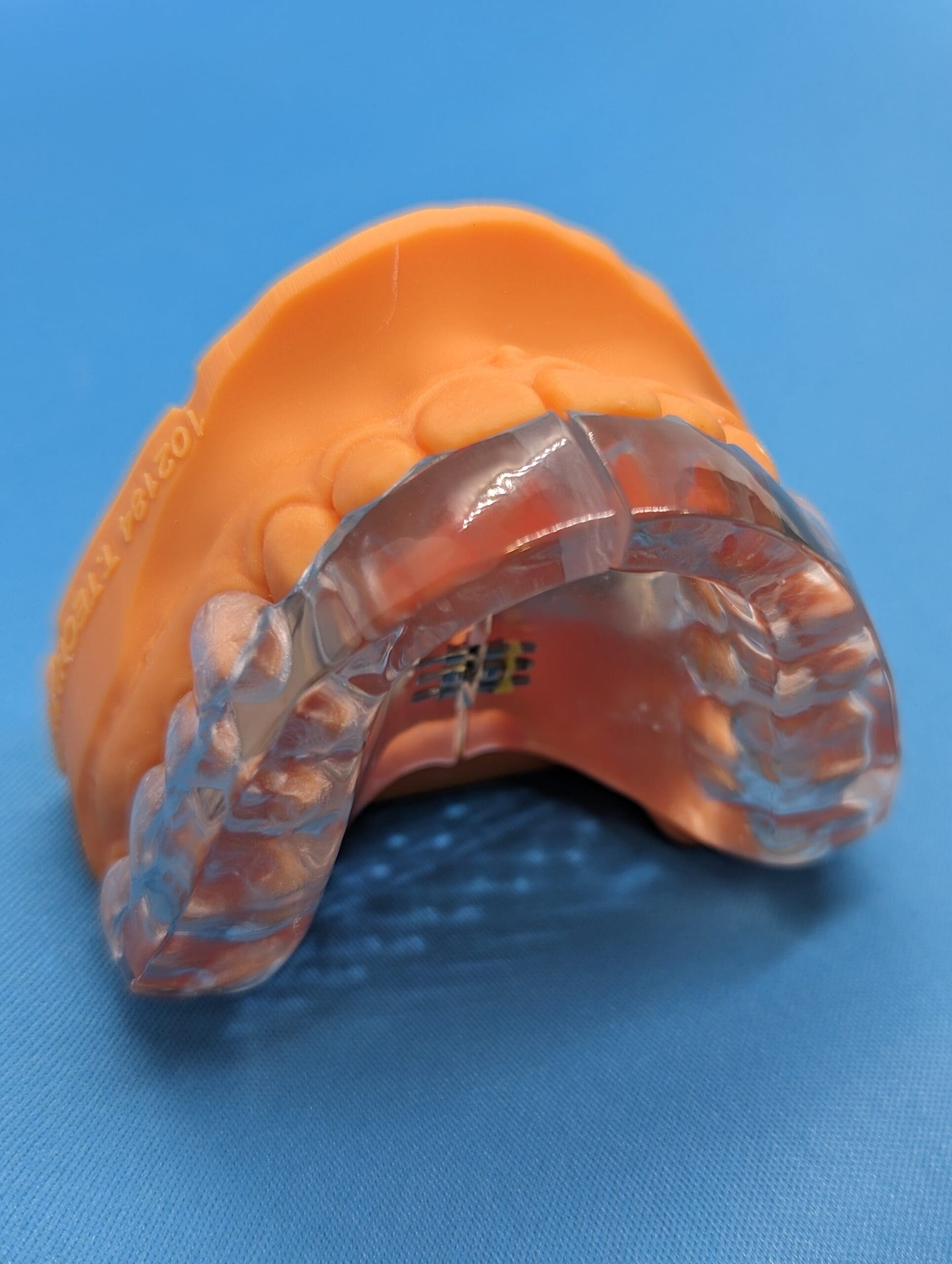
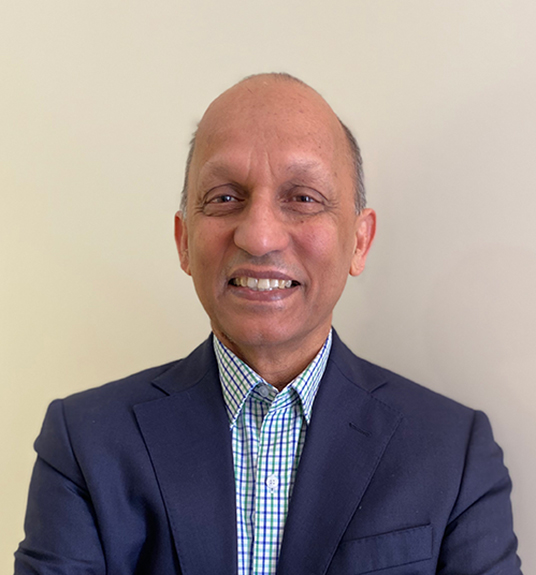
The TMJ is not a load-bearing joint. It is a facilitating joint and has cartilage. If it is compressed the growth centre is damaged. As the jaw joint or condyle drops, by wearing the appliance, the joint is decompressed, allowing the healing of the damaged tissues of the joint to take place, as well as to recapture the disc if displaced.
Disc recapture occurs quickly when the dental/skeletal midline is corrected. The SOMA being a removable splint as one part of its structure has a full occlusal platform that can help correct the midline. The platform also controls the eruption of teeth in the opposing arch that are low, allowing them to extrude and maintains the teeth that are high in place restricting further eruption. The adjustments are done such that only vertical forces are allowed on the posterior teeth and must be equal on the right and left. This is dependent on the severity of the individual case. This action keeps the lower jaw independent from the upper jaw, preventing the upper jaw from influencing the lower jaw. Generally in a class 2 type case, the upper jaw traps the lower jaw. This is particularly true in deep bite and narrow arch cases. Using a full platform that is correctly adjusted, un-traps the lower jaw and allows greater translation or longer centric movement. This further allows the lower jaw to translate forward of the upper jaw as in jaw protrusion, and come back to a preferable edge to edge position. Unhindered free movement in all directions and opening of 50mm or more is the goal of SOMA treatment.
Patients who present with an over jet usually have a retruded or distally positioned condyle. Often this results in a subluxation/displaced disc, particularly with a deep bite. In a closed lock scenario, typically the jaw has some hinge movement, not enough translation with muscle splinting. The over closure of the jaw joints results in loss of joint space as well as trapping the disc out of the joint in many cases and there is no clicking. on recapturing the disc there is resumption of clicking and with further healing and normal joint function the clicking can resolve The methodology for adjusting the platform is different from NTI or the Michigan splint. As the front platform is lowered and barely touching the lower teeth so that no damage occurs to the delicate lower front teeth. The posterior platforms are vertically higher, and promote forward movement and rotation of the jaw upward as opposed to making the face longer as in mouth breathing cases.
The methodology of adjusting is a very critical component in the success of the SOMA appliance and needs to be learned properly by the dentist issuing the appliance and thus only a highly trained dentist can do it properly.
Dr. Joseph Da Cruz has spent many years of research, refining and collaborating to develop an innovative Mandibular Growth Device that integrates Splint, Orthopaedic, and Myofunctional Appliance (SOMA) therapy into one phase of treatment. The SOMA uses a multifaceted approach to treating TMJ pain and dysfunction, growth and development, sleep, neck issues and much more.
The SOMA treatment involves gentle expansion of bony structures in the upper palate without creating pain. This produces major improvements in facial patterns and straightens teeth, while pacifying the nervous system by dampening down the sympathetic overdrive. Through its design, the SOMA avoids fight-back of facial muscles produced by regular appliances, which in turn aids orthodontic correction with great efficiency. By reducing muscle fight-back, the SOMA can effectively decompress the Temporo-Mandibular Joint (TMJ) into a stable comfortable position to also provide immediate relief of Temporo-Mandibular Dysfunction (TMD) in a lot of cases, but more difficult cases need time & follow up. A thorough investigation is needed in the beginning. There are primary, secondary and tertiary cases where primary are the easiest and
tertiary is the most difficult. Due consideration is always taken.
The benefits produced by the SOMA are far more than just orthodontic and facial. The SOMA has helped relieve different types of chronic pain, respiratory problems, TMD, neck/spine problems and immune system conditions. There is a hypothetical possibility that the pituitary gland and pituitary thyroid adrenal axis functions improve when the cranium is widened. In addition, the SOMA improves airway space, thus improving swallowing, speech, eating, breathing, and sleeping.
There is a common problem found in standard fixed and removable dental appliances. The issue with standard appliances are that they lock the maxillary sutures and teeth. If the cranial sutures are jammed, they inhibit the Cranial Respiratory Impulse (CRI). The CRI is the continuous pulsation in the cranium whose strength is essential for optimum health.
The SOMA creates sufficient retention without jamming the cranial sutures. The SOMA prevents strain on the CRI and relaxes the muscles of mastication. When the muscles of mastication are relaxed, muscle fight-back does not occur around the bones of the face and jaw. This is when cranial release occurs. This enables teeth to be orthodontically moved faster without relapsing. While of course it takes time to bring about bony changes. One of the most interesting aspects of
the SOMA is that as soon as the brain perceives the correct realigning pressure, there is an immediate reduction in stress, sympathetic nervous system overactivity, an enhancement and balancing of the cranial respiratory impulse, opening of the nasal passages and relief of many muscle tensions.
The SOMA was initially developed for treating TMD, however, the TMD would not resolve satisfactory without also treating the malocclusion. An orthopaedic approach was incorporated into the treatment process as a second component. Unfortunately this was not sufficient, a third component needed to be addressed, this was tongue positioning. Thus successful treatment could not be achieved unless proper stable jaw positioning was established with a sound cranial base.
When these three components of treatment were addressed, that is TMD, orthopaedic and a stable Jaw position (tongue position), the results were highly satisfactory in a short period of time. The SOMA address all three components of treatment to provide rapid, effective and stable TMD treatment. Consequently this approach produced beneficial side effects of reduced headaches, migraines, posture pain and sleep disordered breathing. This highly effective treatment is simple,
intuitive and a stable treatment option for any dentist with a background knowledge in TMD. The occlusal balance is also a critical part of the SOMA methodology.
Dr. Joseph Da Cruz credits Dr. John Diamond (https://drjohndiamond.com) for his assistance in designing the SOMA appliance and sharing knowledge on kinesiology and osteopathy.
Collaborative work between Dr. Joseph Da Cruz and Dr. John Diamond revealed that realignment of the cranial bones and forward positioning of the lower jaw are key factors that need to be addressed when dealing with the alignment of teeth. If the cranial structure and architecture are not corrected, then the superficial realignment will collapse.
By integrating splint therapy, orthopaedic, and myofunctional treatment, the SOMA can help in the realignment process of the cranial base thus establishing a sound dental architecture from which teeth can be aligned and remain stable.
For a prefect cosmetic result, aligners can be use in the final phase of treatment.
As the lower jaw drops, recapture of displaced discs can occur. If the lower jaw can translate this aspect shows a significant aspect of the SOMA in that the lower jaw can also be positioned muchmore forward without being influenced or being forced. This is better than having a sleep device with no consideration to the health of the jaw joints and forcing the lower jaw forwards.
There are positive effects on the muscles around the face and neck. typically the chin muscle (mentalis) will relax, together with the upper lip tightening. The chin groove is reduced and there is an improved facial profile. This is a beneficial myofunctional effect. In addition, it influences and relaxes all the suprahyoid and infrahyoid muscles. It also encourages nose breathing and keeping the mouth closed. Breathing properly and comfortably is of prime importance for relaxation and de-stressing. Once this happens the diaphragm starts to work properly. We do not want forced forward positioning of the lower jaw as muscles tire when overstretched and so it must be gradual. It is more important to get recapture of the disc in the jaw joints and this is when the jaw translates forward and is natural. Airway and breathing greatly improves if this occurs.
The jaw must be able to move in any direction without being trapped or restricted. Clenching activity i have observed decreases as the jaw moves forward and the Curve of Spee and Wilson flatten out. This sort of correction with growth and development is far better than symptomatic management depending on an appliance all your life
Activating the appliance by turning the screw will apply pressure from the acrylic on the lingual side of the teeth, in the anterior-posterior and transverse plane of the jaw. The transverse adjustment is more important than the anterior posterior adjustment. In the upper jaw, the teeth are connected to alveolar process of the maxilla. The upper jaw or maxilla consists of the left and right bone and incisive bones, which are not fused together. The subtle pressure applied to the teeth stimulates movement (cranial expansion) of the maxillary, palatine, and incisive sutures and unfolding. The effect of decompression of these palatal sutures allows mechanoreceptors present in the palatal sutures to initiate a feedback mechanism to the central nervous system and depress the overall sympathetic activity in the body. It results in an overall feeling of reduced stress and a feeling of harmony instead of tension or tightening. Creating greater room or more bone, allows malocclusion to be corrected as well. This can be precisely directed. Bone can develop in various ways of which one is the suture with increase in width of the maxilla in the transverse plane. The upper jaw can widen as the maxilla unfolds due to the action and design incorporated in the SOMA. Sometimes there is immediate wider opening of the jaws, in some instances as much as 10mm. It does take time and needs the cooperation and diligence of the patient. If jaw-opening vertical length increases, then treatment outcomes tend to be better. The type of release is cranial release expansion as different from orthodontic, which is a forced expansion. It happens as a result of unfolding or unravelling of different muscular stress patterns, some worse than others.
All orthodontic/cranial pressure is light and not such that pain is caused or teeth hurt. Although the upper jaw is cranially expanding i have observed so is the lower jaw expanding at a similar rate. I think it is hydraulic stimulation. The body cannot handle too rapid change that is not going along with the mechanisms of the body. This system does not create growth binding as when fixed retainers are used after braces. I am of the view that all core issues, particularly alignment and muscular disharmonies be dealt with before attempting cosmetic procedures which include straightening teeth. Teeth generally tend to drift and straighten of their own accord with a little help but this may not be perfect alignment and not to the expectation of the individual. After SOMA treatment cosmetic treatment can be started which is orthodontic. My tendency is to do aligners as opposed to fixed braces.
The maxilla consists of both a left and a right bone that are not fused. When the maxillary bones are compressed, it alters the shape of the palate giving it a sort of distorted tent-like appearance.
The palate which is the floor of the nose can push up into the nasal cavity as well as deepen the palate and may reduce the size of the nasal cavity. Light subtle expansion of the maxilla decompresses the palatal sutures altering the shape of the palate, making it flatter and more rounded, as well as lowering the palate, changing it from a tent-like shape to a more rounded dome. This is beneficial in improving airway, nasal breathing and reducing mouth breathing.
Sometimes diet control is also important as well The first effect of the SOMA is to stimulate not aggravate a response from the mechanoreceptors in the palatine, maxillary, and incisive sutures, which—in turn, creates a neural inhibition and decreased sympathetic activity. The result of this inhibition is a relaxation of muscle fibres around the neck, face, throat and improved jaw opening. Further expansion can then alter the position of teeth and transmit expansion within the palatal sutures, stimulating bone growth in maxillary and incisive sutures.
The appliance can apply pressure on the 4 front teeth if desired, the central incisors, and lateral incisors, or tip (bodily move) tip the teeth or just apply light pressure to develop the incisive bones and provide more room for the laterals and canines. The incisive sutures run between the canines and laterals to the maxillary suture and is Y-shaped. It can fuse with the maxilla around 55 years of age. Thus, early treatment is always preferred, yet it is never too late to bring about architectural changes. Bone has properties to swell or shrink. In many people with malocclusion, the incisive bone is underdeveloped. This can result in the exclusion of the canines from the arch (a vampire appearance), a narrowed arch, as well as protrusive maxilla since the teeth are tipped away but in real terms, it is retruded or underdeveloped. For example, refer to the work of Western Price, who shows pictures of so-called primitive people with improperly developed jaws as a consequence of eating refined modern food. The lower teeth are often occluding with the soft tissue of the palate with malocclusion and faulty architecture.
When subtle pressure is applied to the teeth, the incisive bone and the sides of the maxilla move gently such that the body does not perceive it as a stress. As a result of expansion, the sutures are opened up and stimulate mechanoreceptors, which have a neurological effect on the brain. Dr. John Diamond mentions that Dr. Willie May had to buy bigger and bigger hats due to cranial expansion, and he used these hats in his demonstrations.1
Normal clenching action and TMD can compress the temporal bone and the maxilla against the frontal bone, which can compress the sphenoid. Using the SOMA can free up the bones in the maxilla, as well as other cranial bones.
1 Refer to: John Diamond, M.D., “Two Dentists and Their Appliances: Dr. Willie May and Dr. Joseph Da Cruz.” Article, with case photographs, can be viewed and downloaded at:
http://www.drjohndiamond.com/category.php?id=90 Page 9 of 58
It stops the condyle from jamming up the temporal bone. The temporal bones are sandwiching the sphenoid laterally and also occiput and frontal act in anterior posterior direction. Now it can be decompressed through the action of the appliance on the TMJ and maxilla. The other big issue is the lateral pterygoid and medial pterygoid muscles (which attach to the pterygoid plate of thesphenoid. When these muscles are free due to disc recapture and proper translation the sphenobasilar synchondrosis can grow at the appropriate age as it too has cartilage and a suture and the maxilla can move forward because there is growth in all the cranial bones. Thus, the cranium can move and morph into a better state. The sphenoid bone is like a horse reigned in by muscles from the jaw attached to it. Incidentally the eye muscles are also attached to greater wing of Sphenoid. So try to figure eye problems with jaw problems and narrowing of the face leading to longer eye ball shape and short sightedness as well as myriad of eye shape changes. Hearing is another one that responds to improved Joint function and opening of the eustachian tubes.
There are always flow-on effects when the atlas-axis relationship is improved. Reduction in neck and back pain has occurred in many cases. There are compensatory positions in the human spine, and the work of a skilled osteopath, chiropractor, physiotherapist, body worker, or sports medicine doctor is recommended. Specific compensations or problems occur at the junctions listed below. It is advisable to examine these areas and observe changes and improvement as treatment progresses.
Decrease in sympathetic activity with subsequent improvement in blood flow will decrease ischemia and improve healing. Ischemia and pain are very much related; there may be releases in Dura matter, Fascia, and decreased compression of vertebrae.
Keeping check on hydration, electrolytes, blood pressure, sugar levels and physiology to get optimum results is advisable.
When a patient has numerous problems in the jaw joint, he is putting enormous stress on numerous other muscles supporting the jaw and the neck. This leads to additional problems.
TMD patients nearly always have problems with their neck. When the TMJ problems are addressed, the neck problems settle. This can affect and relieve tension headaches and in many cases, migraines of the classic and ordinary types. There are various types of headaches: Some due to mastication; those associated with the lessor occipital and greater occipital nerves in the back of the head, also called cervicogenic headaches; and those associated with the styloid process, stylohyoid ligaments and problems in the throat itself. The appliance has shown positive results in many of these types of cases. By relieving the TMJ, the pressure is relieved on the axis and atlas. The appliance can allow recapture of the disc in the TMJ, if the disc is dislocated.
By allowing lymphatic drainage to occur, swelling is reduced in the face. This can lower pressure and relieve headaches, migraines, and sinusitis. With the shrinkage of tonsils and adenoids, nasal breathing will increase. Both adenoids and tonsils are involved in obstructive breathing and give rise to sleep-disordered breathing. By reducing the size of adenoids and tonsils and also influencing the maxillary sutures and incisive sutures, the roof of the mouth changes from a tent shape to a dome shape. This increases the volume capacity of the nasal cavity. The breathing patterns will change to normal nasal breathing, rather than mouth breathing (as nature intended).
Relieving strain on the TMJ will permit the lower jaw to move forward and the tongue to be drawn away from the back of the throat which increases the size of the airway, allowing for greater oxygenation with each breath. When the breathing is improved, the patient will find that sleep problems diminish. This may also relieve headaches associated with lack of sleep. As a result, this cascade of effects, along with increased parasympathetic activity, may help to make the patient calmer and less irritable.
Most cranial nerves pass through the sphenoid. This is why the expansion process using the appliance has the greatest impact on the sphenoid. The sphenoid has motion capacity. When there is movement (cranial flow) in the brain, this is transmitted through the sphenoid. This is also known as cranial respiration or cranial waveform. It is a form of respiration movement for cerebral spinal fluid and is similar to lymph movement in the brain. It moves into the whole spinal cord. Certain osteopaths and chiropractors and craniosacral therapist are more knowledgeable in this area. It is constant learning. When a patient gets a headache or migraine, it can be caused intracranialy. Sometimes this can be referred to as a vascular headache, when there is too much pressure in the brain. The relief of pressure within the cranium and the sphenoid can relieve a headache. There may also be a problem with a release of histamine and other inflammatory substances as calcitonin gene related peptide, which is a powerful vasodilator and associated with pain neurologically. Histamine is the water controller of the body and will increase in cases of dehydration and certain foods. In a way low blood pressure has problems and so does high blood pressure.
The temporal bone is connected to the maxilla via the zygomatic bone. By means of expansion, one is moving the temporal and frontal bones away from each other, creating cranial expansion anterior posteriorly and transversely. Some mechanoreceptors elicit a neurological response.
However, there is a greater quantity of nerve-to-muscle fibres in the teeth and thus, one attains a higher neurological response by relieving stress around the teeth. (As a personal observation: Clenching causes over-stimulation and sympathetic dystrophy.) By using the SOMA, one can bring about expansion, relaxation of muscles, and allow lymphatic drainage. This is done by using a mode of action on the TMJ, maxilla, sphenoid from both sides, and the sympathetic nervous system.
There can be inflammation in the TMJ, lymphatic problems around the head and neck, fluid retention in the middle ear, blocked sinuses. By expanding the maxilla, and relieving the TMJ, one can elicit a neurological response to reduce muscle spasms and allow lymphatic drainage to occur. It has been observed that, in numerous cases where the appliance is worn, evidence that lymphatic drainage has occurred has been shown by a marked reduction in the size of adenoids and tonsils in a very short period of time. The neurological change decreases the body’s sympathetic activity, allowing a relative greater increase in parasympathetic activity. The increase of parasympathetic activity influences sleep and improves nasal breathing, resulting in an overall body change. As parasympathetic activity increases due to increased sweating it is advisable to drink enough water so as not to feel dehydrated and get low blood pressure. A low histamine diet is also advisable as it can further lower blood pressure. A healthy balance does wonders for mood, energy and sleep.
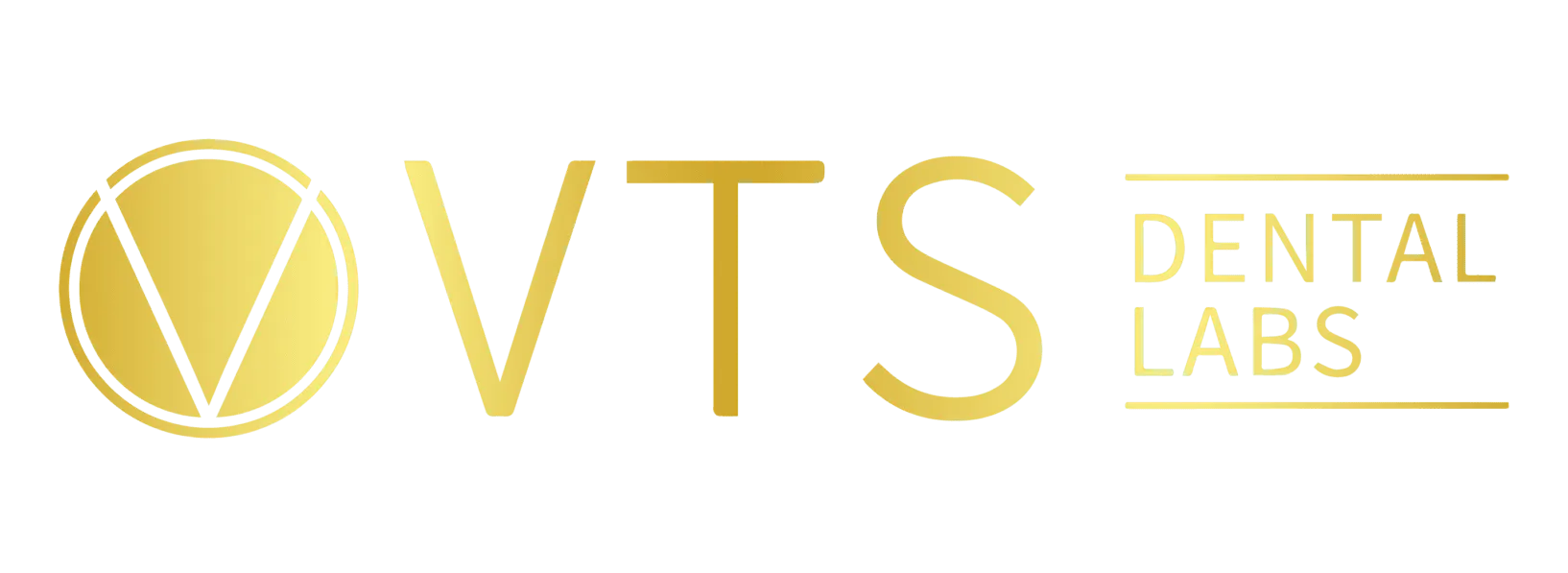
Hi, I’m a customer care representative at VTS Dental Lab. I have a background in dentistry. As a customer care representative, I’m committed to providing the best care through communication and high-quality service. Outside of work, I love to travel around and take pictures.
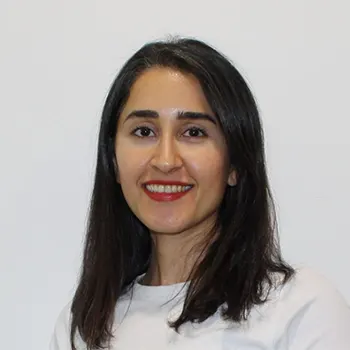
I’m Saba – Certified Dental Technologist at Sydney Dental Lab by VTS Dental
I graduated with bachelor degree in dental technology and spent a full course in Implant dentistry – Laboratory view. Winning several awards as a top student and cooperating in publishing books regarding laboratory procedures are other achievements of my academic life.
With almost a decade of experience working in the ceramics department, Implant and digital dentistry, I joined VTS Dental Lab Sydney to help you with technical support and to make sure you spend less time chair side.
I also enjoy sports; running, swimming and hiking in particular, in my free time.
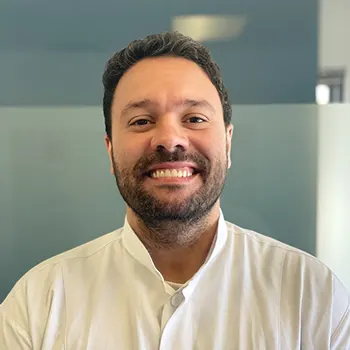
Pedro is a distinguished dental professional who hails from Brazil but has made his mark in Australia. With a career spanning over a decade, Pedro has become renowned for his dual roles as both a dentist and a dental technician. His journey in the world of dentistry showcases a deep commitment to the craft and a passion for serving patients with the highest standards of care.
Trained in Brazil, Pedro brought his expertise to the shores of Australia, where he quickly established himself as a trusted name in the dental community. His ability to bridge the gap between clinical dentistry and laboratory work has made him an invaluable asset to the field.
As a dentist, Pedro's specialization in a range of dental procedures, including implants and prosthetics, has enabled him to transform the smiles and lives of his patients. His meticulous attention to detail, combined with a genuine concern for patient well-being, has earned him a reputation for delivering outstanding dental care.
In parallel to his clinical practice, Pedro boasts a unique skill set as a dental technician. His experience in the dental laboratory for over a decade equips him with a comprehensive understanding of the intricacies of crafting dental prosthetics. This dual role not only sets him apart but also ensures seamless coordination between the clinical and technical aspects of dental procedures.
Outside of his professional life, Pedro cherishes his free time. He finds joy in gathering friends and indulging in the Australian tradition of barbecues, where good company and the sizzle of the grill create lasting memories. Additionally, Pedro is an avid soccer enthusiast, finding the perfect balance between work and play on the field.
Pedro's journey from Brazil to Australia, his extensive dental career, and his dual roles as a dentist and dental technician, reflect his unyielding dedication to dentistry and patient satisfaction. His passion for delivering exceptional care, coupled with his love for social gatherings and soccer, highlights a well-rounded individual dedicated to enriching lives both professionally and personally.
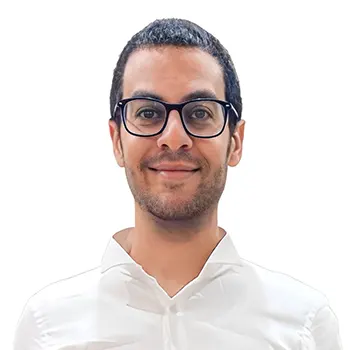
Omar's commitment to excellence is evident in his unceasing quest for knowledge and staying current with the latest developments in dental technology. He understands the importance of staying at the forefront of his field, and he actively maintains the highest levels of accreditation while embracing ongoing education to further his expertise in the manufacturing of dental restorations.
Outside of his professional life, Omar's interests span a wide spectrum. He takes pleasure in immersing himself in literature during his leisure time, allowing books to broaden his horizons. When not engrossed in reading, he seeks balance and relaxation through the camaraderie and physical activity that sports offer. Playing sports provides him with a healthy counterpoint to the meticulous and detail-oriented work of a dental technician.
Omar Mahmoud's story is one of dedication, global experience, and a holistic approach to life. His commitment to the dental profession, paired with his passion for continued learning and personal interests, showcases a dental professional who not only excels in his craft but also brings a rich tapestry of experiences to his life and the lives of those he touches.
As a dentist, Pedro's specialization in a range of dental procedures, including implants and prosthetics, has enabled him to transform the smiles and lives of his patients. His meticulous attention to detail, combined with a genuine concern for patient well-being, has earned him a reputation for delivering outstanding dental care.
In parallel to his clinical practice, Pedro boasts a unique skill set as a dental technician. His experience in the dental laboratory for over a decade equips him with a comprehensive understanding of the intricacies of crafting dental prosthetics. This dual role not only sets him apart but also ensures seamless coordination between the clinical and technical aspects of dental procedures.
Outside of his professional life, Pedro cherishes his free time. He finds joy in gathering friends and indulging in the Australian tradition of barbecues, where good company and the sizzle of the grill create lasting memories. Additionally, Pedro is an avid soccer enthusiast, finding the perfect balance between work and play on the field.
Pedro's journey from Brazil to Australia, his extensive dental career, and his dual roles as a dentist and dental technician, reflect his unyielding dedication to dentistry and patient satisfaction. His passion for delivering exceptional care, coupled with his love for social gatherings and soccer, highlights a well-rounded individual dedicated to enriching lives both professionally and personally.
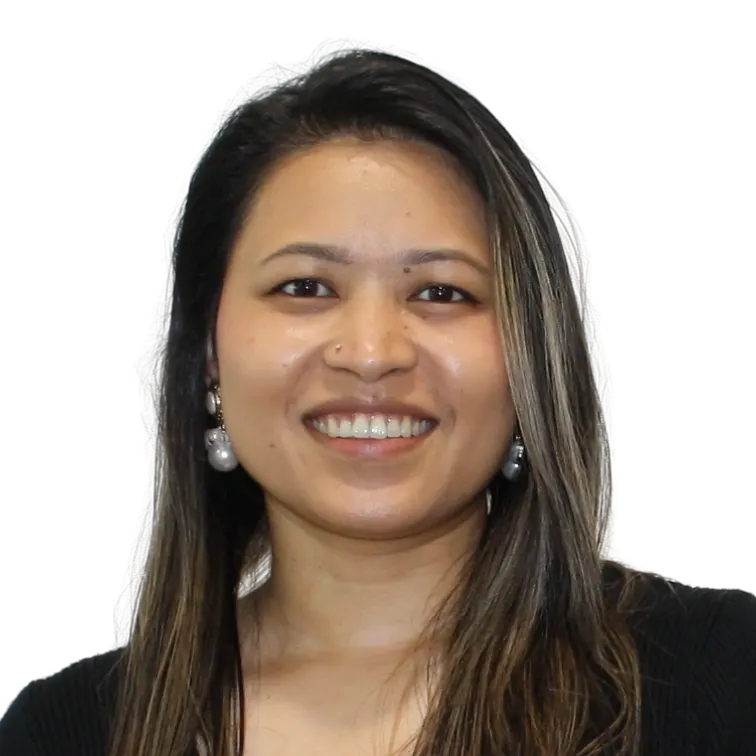
I provide operational support for the smooth running of the business. I pride myself in running an effective and professional support service to our clients.
I am Eager to learn new traits and step out of my comfort zone to help achieve success.
I aspire to learn all I can to improve what I know and what I can offer.
When not at work, I love reading, dancing and sharing meals with my loved ones.

India is the Business development manager for our South Australian team. India has 8 years’ experience working in the dental industry. She has worked as a dental assistant in Ortho, General dentistry and Implants.
India brings a wide range of knowledge to the team not only in dentistry but account management and sales as well.
In her spare time, India enjoys keeping fit, and writing music with her bandmates.
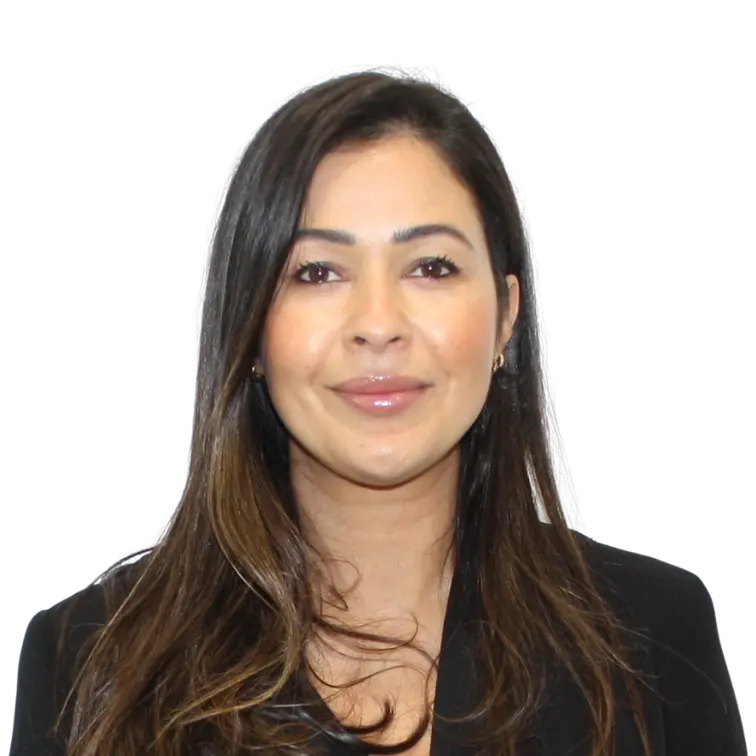
Fay Saad brings over 15 years’ experience in Management Accounting with finely tuned skills in forward looking strategies, modelling leadership and more.
She is Responsible for directing the company finances and overseeing the budget across all departments, additionally she uses her impeccable vision and leadership in order to determine the optimal strategies for financial investment in order to ensure company growth both in short and long term.
Fay Graduated with a Bachelor of Commerce and Business.
Outside of work, she enjoys reading, cooking and travelling.
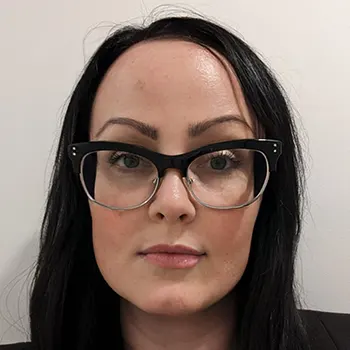
Chantelle is a seasoned professional in the field of dentistry, with an impressive track record spanning two decades. Currently serving as the Chief Operating Officer at VTS Dental Lab, Chantelle has consistently demonstrated expertise and innovation in the world of dental care.
With a primary focus on implants and digital integration within dentistry, Chantelle has been at the forefront of revolutionizing dental practices, streamlining processes, and enhancing patient care. Throughout her career, She has continually strived to merge cutting-edge technology with the artistry of dentistry, creating a seamless and patient-centric approach to oral healthcare.
Chantelle's contributions to the industry extend beyond clinical practice. As a strategic visionary, Chantelle developed and executed successful business strategies that have propelled VTS Dental Lab to new heights. Her meticulous oversight spans all facets of the business, ensuring that growth strategies are effectively implemented and marketing initiatives are optimized for maximum impact.
Chantelle is not only a leader in the dental community but also a dedicated advocate for advancing the profession. Her commitment to excellence, passion for innovation, and dedication to the well-being of patients have made her a respected figure in the dental industry. Chantelle's unwavering pursuit of excellence continues to shape the future of dentistry, leaving a lasting impact on the profession and the lives of countless patients.
Outside of her professional endeavors, Chantelle finds balance through creative outlets and enjoys Skating, Design and Painting further demonstrating her multifaceted talents and dedication to a well-rounded life.
Chantelle stands as a shining example of expertise, leadership, and vision in the field of dentistry, and is committed to driving the industry forward for many years to come.